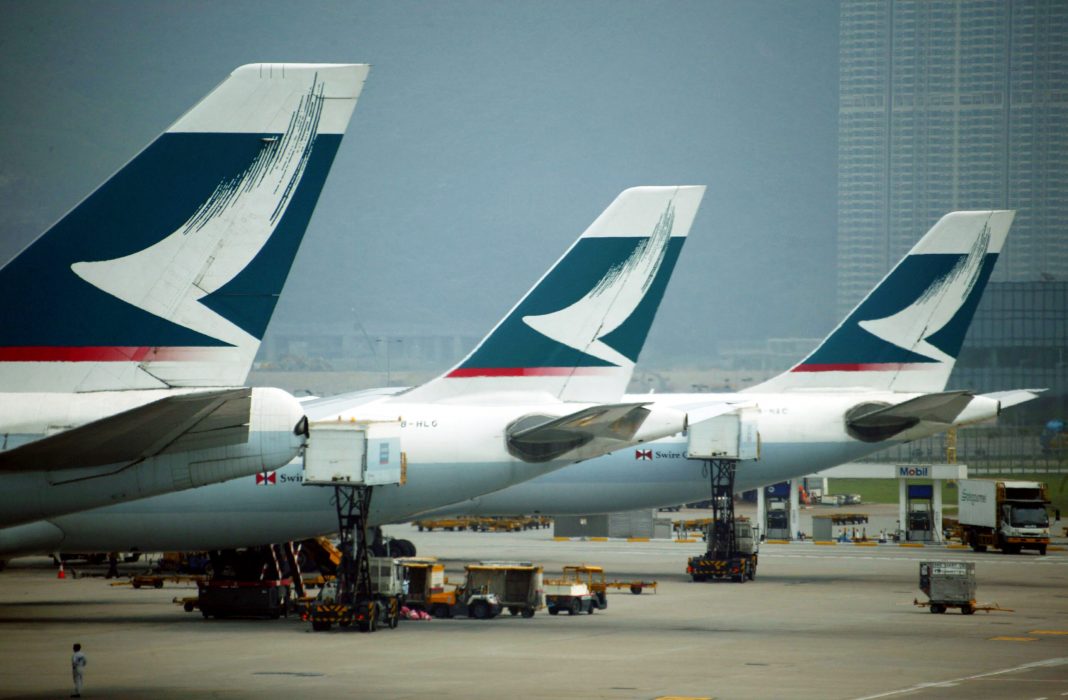It’s a sign of how things have changed at Hong Kong Airport. Last year, five of the world’s ten busiest international air routes involved Hong Kong. This year, huge drops in both passenger and airline traffic through Hong Kong will see big changes in the rankings. Despite this, the top 10 global international routes list reveals just how important Hong Kong Airport normally is.

Tens of millions of travelers normally pass through Hong Kong Airport
The top ten list is published by airline analysis company, OAG. The 2020 version of the busiest routes came out in April and covers data from 2019. OAG notes that in 2019, nine out of the ten busiest international routes were in Asia, with the most centering on Hong Kong. The only non-Asian international route list amongst the world’s busiest was the run between London Heathrow and New York’s JFK. That came in at eighth spot with 3,833,701 in 2019.
Even before this year, Hong Kong Airport had a torrid 2019 with rolling pro-democracy protests paralyzing the city and the airport. In 2019, 71,543,000 travelers moved through Hong Kong Airport. That was down on the 74,672,000 travelers in 2018. But 2019 was a spectacular year compared to 2020. In the 12 months ending September 30, 2020, only 24,695,000 travelers have moved through Hong Kong Airport, suggesting the busiest top ten list for this calendar year will be very different to last year.
Most of the world’s busiest international air routes are in Asia
In 2019, the world’s busiest route was between Hong Kong and Taipei. Last year, 7,965,538 people made the trip, or as OAG says, roughly 22,000 travelers per day. That equates to an awful lot of planes zipping back and forth between the two cities each day. Or it did. In contrast, at the moment, only a handful of flights operate each day.
Flights going to or from Hong Kong also claimed positions four to seven on the ten busiest international flights list. In fourth spot was the route between Bangkok (Suvarnabhumi) and Hong Kong. Last year, 4,826,872 travelers made the trip. Again, this sector is normally thick with Cathay Pacific and Thai Airways flights. But to give you an example of one random day in November, November 17, there is just a single nonstop flight in each direction – on Emirates.

In fifth spot is the route between Hong Kong and Shanghai (Pudong). 4,463,658 people made the trip in 2019. Usually, Cathay Pacific pulls in a big slice of its revenue from flights to mainland China, but the political fallout from the pro-democracy protests and events of this year have seen traffic numbers slashed between mainland China and Hong Kong.
Cathay Pacific flights now few and far between
In sixth spot is the run between Hong Kong and Seoul Incheon. In 2019, just under four million people made the journey. Typically, passengers would have a choice of multiple airlines. Now, the pickings are a lot leaner. On the sample random date, November 17, just one Asiana flight is coming up as available on Google Flights. An Air Seoul flight is showing as unavailable. There are no Cathay Pacific flights listed.

The final Hong Kong route in the top ten busiest list is the run between Hong Kong and Manila, which carried 3,852,991 passengers in 2019. Normally the skies over the South China Sea are busy with competing airlines on the route. Nowadays, things are quieter. Cathay Pacific is down to running about two flights per week in either direction.
When OAG releases its analysis for 2020 traffic and passenger numbers, we can expect to see many changes. One of the biggest changes we’ll see between 2019 and 2020 is the impact events have had on Hong Kong Airport. That airport will be unlikely to retain a single place in the world’s top ten busiest international routes.
[ad_2]
Source link


